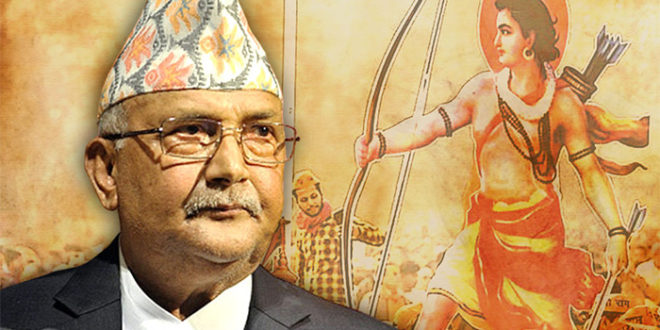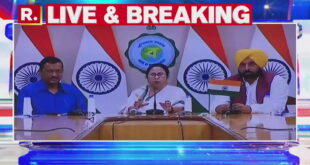In a stunning claim which is set to spark controversy, Nepal Prime Minister KP Sharma Oli, said the “real Ayodhya” lies in Nepal and that “Lord Ram is Nepali”, that is the birthplace of Hindu God Ram is in Nepal and not in India. Ram’s birthplace of Ayodhya is not located in Uttar Pradesh but near the Balmiki Ashram in Thori in southern Nepal, Oli said.
“Although real Ayodhya lies at Thori, the city in the west of Birgunj, India has claimed that Lord Rama was born there. Due to these continuous claims, even we have believed that deity Sita got married to Prince Rama of India. However, in reality, Ayodhya is a village lying west of Birgunj,” Oli claimed at an event organised at Prime Minister’s residence in Kathmandu.
In an attempt to save self from criticism, Oli said, “We have been oppressed a bit culturally. Facts have encroached. We still believe that we gave Sita to Indian Prince Ram. But we gave to the prince from Ayodhya, not India. Ayodhya is a village a little west to Birgunj, not the Ayodhya created now.”
If this wasn’t all, Oli further said: “Valmiki Ashram is also in Nepal and the holy place where King Dasharath had executed the rites to get the son is in Ridi, which is in Nepal,” he said. As Dasharath was the ruler of Nepal, it is natural that his son Ram was also born in Nepal, Oli argued. Therefore, real Ayodhya lies in Nepal, he claimed.
Condemning Oli for his remarks, BJP national spokesperson BizaySonkarShastri said that Left parties in India had always played with people’s faith and that ruling Nepal Communist Party will be rejected by the people of that country in the same way that Indians have rejected the Left.
This comes amid rising tensions between India and Nepal and reports of China are meddling in Nepal’s internal politics. The tensions began when Nepal issued a new map claiming Kalapani, LipuLekh and Limpiyadhura which are a part of India’s Uttarakhand as their territory. Recently, Nepal government decided to ban the transmission of all private Indian news channels, claiming that they had been telecasting content hurting the country’s national sentiments, which soon got partially lifted with the ban remained imposed on Indian private news channels.
 India One News
India One News





